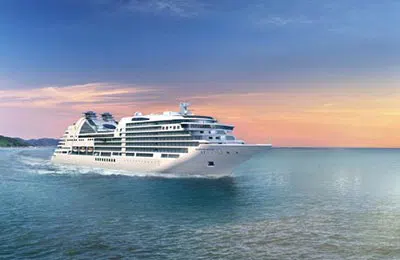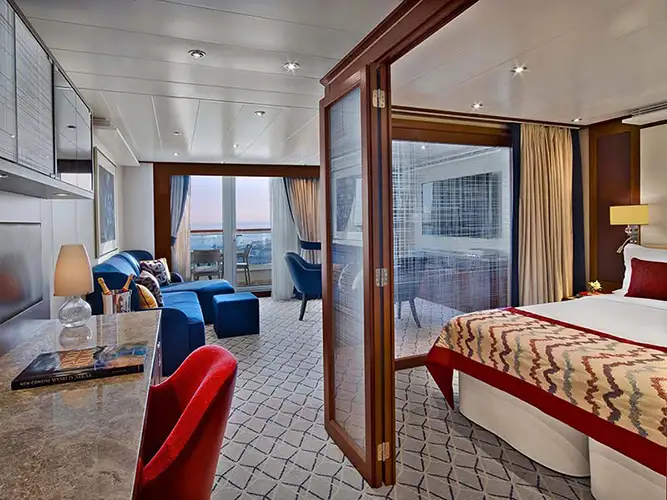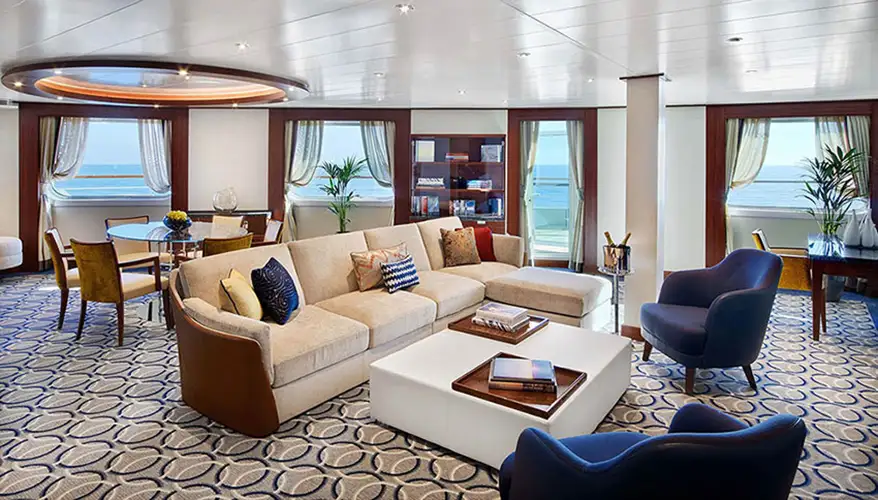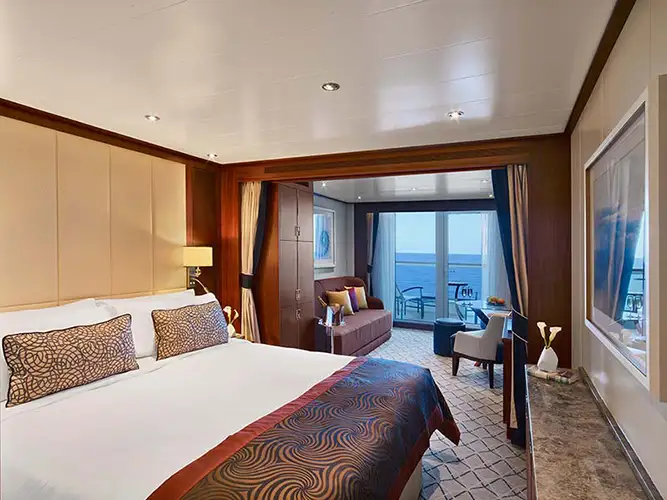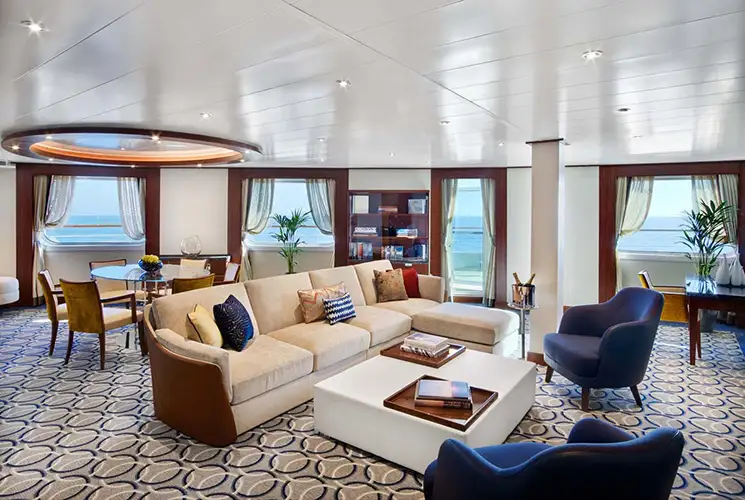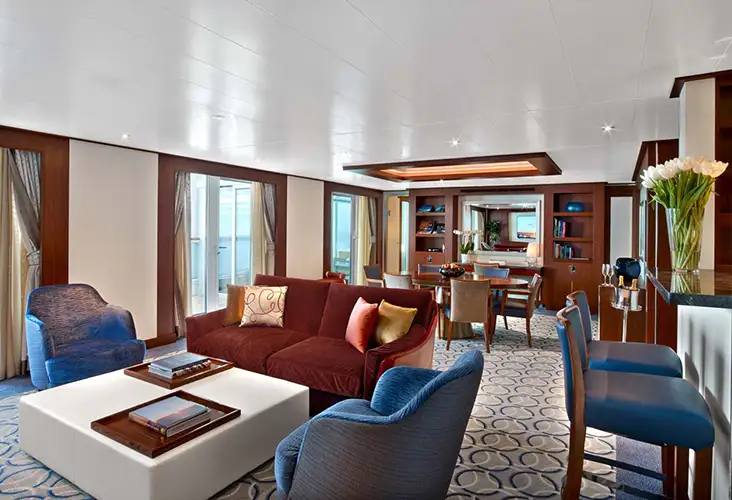Seabourn Mediterranean: 14 nights from Dubrovnik with Seabourn Ovation
Sep 4, 2027
Croatia, Slovenia, Montenegro, Italy
Cruise itinerary
Departure Port: Dubrovnik ➞
Landing: Civitavecchia
-
Saturday, September 4, 2027 - 5:00 PMDubrovnik
-
Sunday, September 5, 2027Navigation
-
Monday, September 6, 2027 8:00 AM - 6:00 PMKoper
-
Tuesday, September 7, 2027 8:00 AM - 6:00 PMRijeka
-
Wednesday, September 8, 2027 8:00 AM - 6:00 PMZadar
-
Thursday, September 9, 2027Navigation
-
Friday, September 10, 2027 8:00 AM - 6:00 PMKotor
-
Saturday, September 11, 2027 7:00 AM - 5:00 PMDubrovnik
-
Sunday, September 12, 2027 8:00 AM - 6:00 PMKorcula
-
Monday, September 13, 2027 7:00 AM - 4:00 PMKotor
-
Tuesday, September 14, 2027Navigation
-
Wednesday, September 15, 2027 8:00 AM - 6:00 PMGiardini-Naxos
-
Thursday, September 16, 2027 8:00 AM - 6:00 PMLipari
-
Friday, September 17, 2027 7:00 AM - 4:00 PMSalerno
-
Saturday, September 18, 2027 7:00 AMCivitavecchia
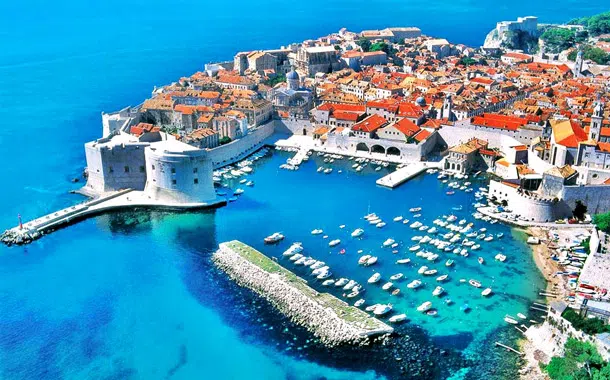
Dubrovnik
Dubrovnik is definitely special. A magnificent curtain wall surrounds marble streets and Baroque buildings exude a pearly light in the Adriatic sun.
Picturesque and artistic, Dubrovnik is a tourist hotspot and port in southern Dalmatia, at the foot of the Srđ mountain. From a historical and cultural point of view, it has been included in the list of UNESCO World Heritage Sites.
Thanks to its beauty and everything it has on offer for tourists, Dubrovnik is one of the most attractive destinations in the Mediterranean, so much so that the city can be visited all year round. In addition to its world-famous architectural heritage, this place has beautiful rocky beaches, pebble beaches and sandy beaches, enjoys a Mediterranean climate and also has lush vegetation. The main pedestrian street, Placa, is a melange of cafes and shops with monuments at each end.
Churches, monasteries and museums adorned with finely carved stone, recall an eventful history and a rich artistic tradition. Beyond the city there is a paradise of beaches, wooded peninsulas and a crystal-clear sea dotted with lush islands.
The city is also known for its delicious cuisine and its infrastructure of hotels for tourists. The city offers a wide selection of first-class restaurants, numerous sport and leisure activities, as well as cultural and entertainment events
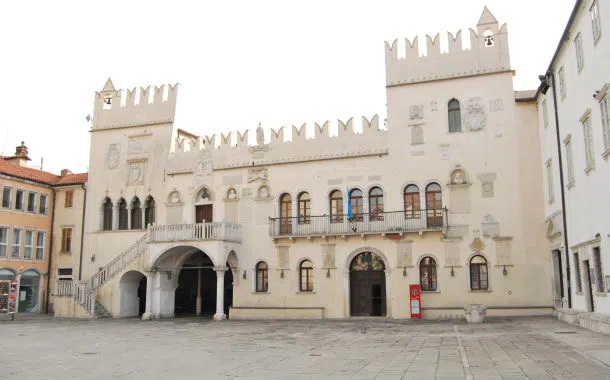
Koper
Koper (in Slovenian Koper, in Croatian Kopar, in German Gafers) is a city in Slovenia with 24,864 inhabitants, the capital of the Municipality of Koper (53,322 inhabitants) and the country's main port; it overlooks the Adriatic Sea. Among the main places of interest in Koper are the Praetorian Palace from the 15th century, in Venetian Gothic style, the Carmine Rotunda church from the 12th century, and the cathedral of San Nazario with its bell tower (55 m) from the 14th century. Koper is a bishopric with the Diocese of Koper, a suffragan of the Archdiocese of Ljubljana.
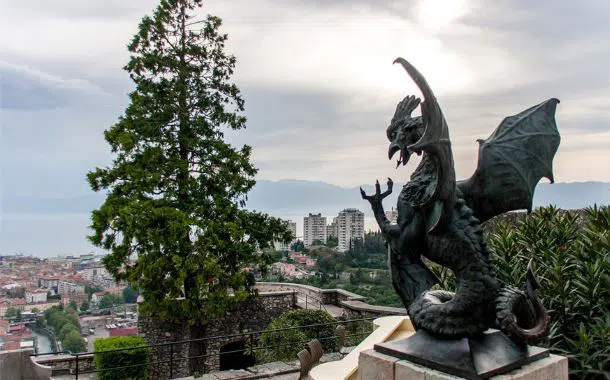
Rijeka
Rijeka is a Croatian seaport and city located in the Gulf of Kvarner, on the Adriatic coast. It is the third largest city in the country.
Before being annexed to the Yugoslav Republic in the twentieth century, it underwent Austro-Hungarian and later Italian dominations at the end of the nineteenth century. Today, the country has an excellent shipbuilding industry.
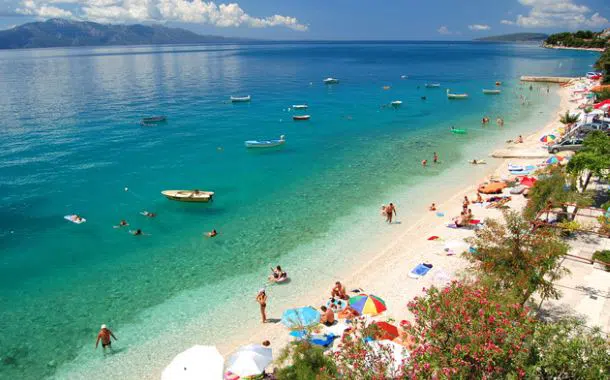
Zadar
Thanks to its geographical position, its beaches and attractive environment Zadar is an ideal destination for visiting the Dalmatia. Icing on the cake: the sunset would be the best in the world according to Alfred
Hitchcock.
Regional capital of northern Dalmatia, Zadar is a small coastal city in Croatia protected by lots of islands of the Kornati archipelago, one of the largest in the Mediterranean. If you want to enjoy your stay in this enchanting country, May, June and September are the most ideal times. A peaceful atmosphere is emanated from this ancient walled city. Surrounded by the sea and numerous pebble beaches, in the territory there are many national parks, in particular the most notably are the Plitvice Lakes, the Krka waterfalls and Velibit Mountain. Even after getting to know the city, you can admire the islands of the Kornati National Park, where you will find a labyrinth of untouched oases. This blessed place of the gods is ideal for diving and snorkling.
The surprising feature of Zadar: it is the only city in the world with a
marine 'organ', the waves produce a sound similar to the instrument used in the church. This is a further reason to discover this city rich in history and full of charm. This island has been inhabitaed for more that three decades, this is testifyed by its magnificent historical and archelogist ruins for example the 9th century monastery of San Donato, the 16th century Venetian bastions or the Porta della Terraferma, both Venetian. The central arch is decorated with a statue of St Chrysogonus, the patron saint of the city, these are just some of the places to visit. If you also plan to have fun, you will find several summer cultural events here, including Zara of Dreams or the musical nights of San Donato. For party-goers, we recommend one of the most famous clubs in Croatia, the Hacienda, which always hosts famous DJs and it is located between Zadar and Šibenik. While for liquors lovers, especially local ones, you can enjoy a typical local Maraschino in the evening.
The capital of Dalmatia, Zadar, is a small coastal city, located in Croatia and protected by numerous islands of the Kornati archipelago, one of the largest in the Mediterranean. If you want to enjoy your stay in this enchanting country, May, June, and September are the most ideal period. In this ancient walled city emanates a peaceful atmosphere. Surrounded by the sea and numerous pebble beaches, the territory has various national parks, in particular, the Plitvice Lakes, the Krka waterfalls, or the Velibit mountain. Even after knowing the city, you can contemplate the islands of the Kornati National Park, where you will find a labyrinth of pristine oases. This place blessed by the gods is ideal for diving and snorkeling. The striking feature of Zadar: it is the only city in the world with a "sea organ", the waves produce a sound similar to that of the instrument used in the church. One more reason to discover this coastal city rich in history and full of charm. This region has been inhabited for more than three millennia, as evidenced by the magnificent historical and archaeological finds. The monastery of San Donato of the 9th century, the Venetian bastions of the 16th century or the Porta della Terraferma, also Venetian. The central arch is decorated with a statue of San Crisogono, patron saint of the city, these are just some of the places to visit. If you also plan to have fun, here you will find several summer cultural events including Zadar of Dreams or the musical nights of San Donato. For partygoers, we recommend one of the most famous clubs in Croatia, Hacienda which always hosts well-known DJs, is located between Zadar and Sibenik. While for lovers of liqueurs, especially the local ones, in the evening you can enjoy a Maraschino typical of the area.
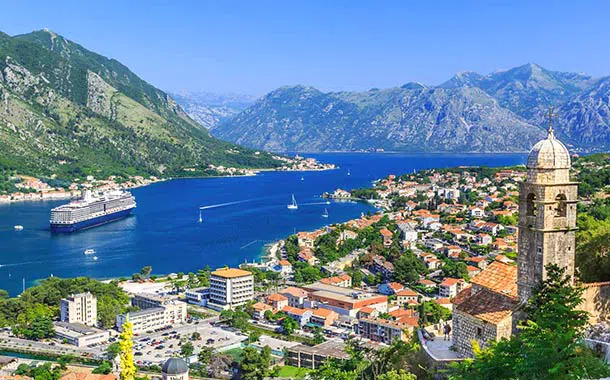
Kotor
The Adriatic Sea penetrates the jagged coast of Montenegro and winds between high mountains until it meets the exquisite and walled medieval city of Kotor.
Along the Adriatic coast of the former Yugoslavia, we find one of the most unique and fascinating European coastal areas, the city hidden in Montenegro, Kotor.
Located at the bottom of a bay, the beautiful medieval city of Kotor is considered a Mediterranean location surrounded by cliffs and an interesting historic wall. The tourist attractions of Kotor are easily reached with a pleasant walk. This small walled city, declared a UNESCO World Heritage Site, has compact dimensions that make it comfortable and easy to visit.
The central part of Kotor was built between the XII and XIV centuries. A historic center surrounded by a rather thick wall, four and a half kilometers long and fifteen meters high. This immense fortified wall reaches the bastion of Sveti Ivan (San Giovanni).
Inside the walls, it preserves an urban network cut into the stone. Its most emblematic work is the Cathedral of San Trifone, built in the 12th century. Inside the church it contains objects and frescoes sculpted during the 14th century. Furthermore, The Orthodox Church of San Nicolas, built between 1902 and 1909 in neo-Byzantine style and that of San Luca (13th century) built in Romanesque and Byzantine style.
Together with the churches, the city includes many palaces that tell its history: the Maritime Museum, located in the Grgurina Palace, a splendid baroque building located in the historic center of the country. The Drago house, with its beautiful Gothic windows, the Prima building, where Renaissance and Baroque lines are combined, the Ducal Palace and the Bizanti, both from the 17th century and the Napoleonic theater in the 19th century.
In Kotor, it is very common to see locals located along the rocky coast in the lower part of the city. In the old part of the area you will find many shops and restaurants that will delight your eyes. This location is the classic ideal city to spend quiet days or for a romantic getaway.

Dubrovnik
Dubrovnik is definitely special. A magnificent curtain wall surrounds marble streets and Baroque buildings exude a pearly light in the Adriatic sun.
Picturesque and artistic, Dubrovnik is a tourist hotspot and port in southern Dalmatia, at the foot of the Srđ mountain. From a historical and cultural point of view, it has been included in the list of UNESCO World Heritage Sites.
Thanks to its beauty and everything it has on offer for tourists, Dubrovnik is one of the most attractive destinations in the Mediterranean, so much so that the city can be visited all year round. In addition to its world-famous architectural heritage, this place has beautiful rocky beaches, pebble beaches and sandy beaches, enjoys a Mediterranean climate and also has lush vegetation. The main pedestrian street, Placa, is a melange of cafes and shops with monuments at each end.
Churches, monasteries and museums adorned with finely carved stone, recall an eventful history and a rich artistic tradition. Beyond the city there is a paradise of beaches, wooded peninsulas and a crystal-clear sea dotted with lush islands.
The city is also known for its delicious cuisine and its infrastructure of hotels for tourists. The city offers a wide selection of first-class restaurants, numerous sport and leisure activities, as well as cultural and entertainment events
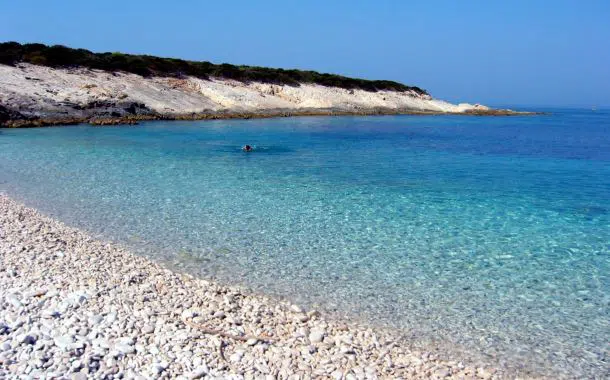
Korcula
The island of Korcula is known for its vineyards and berry fruits, but the most interesting part is certainly its city. Although less known than other municipalities in Dalmatia, it is certainly one of the most beautiful places in Croatia. Located on a peninsula, between stone buildings and defensive towers, Korcula has maintained its original appearance. The metropolis was created in a very ingenious way, the plan of its streets is arranged in a herringbone pattern, the spine is the main road that passes in front of the cathedral, then these lanes of the road meet the sea on both sides. Entering the oldest district, through a magnificent staircase, you will reach the great Revelin tower. Passing through the door, you arrive on the main road that leads to the Basilica of San Marco. You will notice on the facade the superb rose window carved with fantastic motifs, such as dragons and mermaids. The ball clock, with its colored shades, indicates the different phases of the moon. The city has many other monuments to visit. Most are located around Piazza San Marco, dominated by the cathedral of the same name. Korcula boasts of being the birthplace of the famous Marco Polo. Legend or reality? Hard to say. In any case, it is possible to visit his alleged home... Otherwise, you can admire the Church of All Saints of the XIV century, or the Church of San Michele of the XVIII century. Its beaches are considered the most beautiful in Croatia, but don't expect kilometers of sandy beaches, because they are small pebbles of secluded and rocky beaches, but still perfect for swimming or sunbathing in total relaxation.

Kotor
The Adriatic Sea penetrates the jagged coast of Montenegro and winds between high mountains until it meets the exquisite and walled medieval city of Kotor.
Along the Adriatic coast of the former Yugoslavia, we find one of the most unique and fascinating European coastal areas, the city hidden in Montenegro, Kotor.
Located at the bottom of a bay, the beautiful medieval city of Kotor is considered a Mediterranean location surrounded by cliffs and an interesting historic wall. The tourist attractions of Kotor are easily reached with a pleasant walk. This small walled city, declared a UNESCO World Heritage Site, has compact dimensions that make it comfortable and easy to visit.
The central part of Kotor was built between the XII and XIV centuries. A historic center surrounded by a rather thick wall, four and a half kilometers long and fifteen meters high. This immense fortified wall reaches the bastion of Sveti Ivan (San Giovanni).
Inside the walls, it preserves an urban network cut into the stone. Its most emblematic work is the Cathedral of San Trifone, built in the 12th century. Inside the church it contains objects and frescoes sculpted during the 14th century. Furthermore, The Orthodox Church of San Nicolas, built between 1902 and 1909 in neo-Byzantine style and that of San Luca (13th century) built in Romanesque and Byzantine style.
Together with the churches, the city includes many palaces that tell its history: the Maritime Museum, located in the Grgurina Palace, a splendid baroque building located in the historic center of the country. The Drago house, with its beautiful Gothic windows, the Prima building, where Renaissance and Baroque lines are combined, the Ducal Palace and the Bizanti, both from the 17th century and the Napoleonic theater in the 19th century.
In Kotor, it is very common to see locals located along the rocky coast in the lower part of the city. In the old part of the area you will find many shops and restaurants that will delight your eyes. This location is the classic ideal city to spend quiet days or for a romantic getaway.
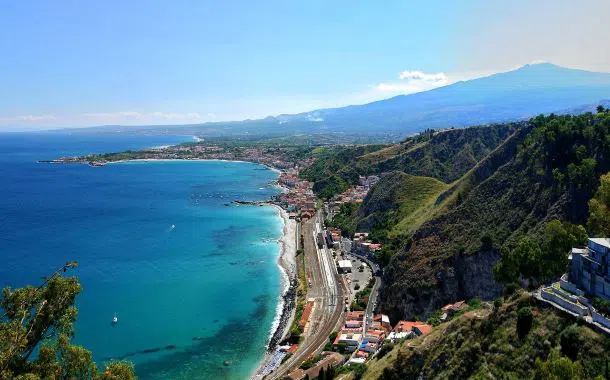
Giardini-Naxos
Giardini-Naxos (Giaddini or Giaddina in Sicilian) is an Italian municipality in the province of Messina in Sicily. Formerly called Nasso, it is 40 km from Messina and 39 km from Catania. In 1978, "Naxos" was added to the old name of the town ("Giardini").
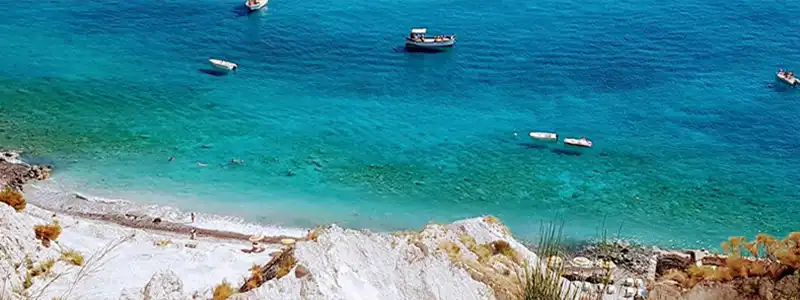
Lipari
Lipari is the largest of the Aeolian Islands, located in the Tyrrhenian Sea off the north coast of Sicily. During a cruise ship stop, there are many fascinating things to do and see.
First of all, you can visit the historic center of Lipari, with its picturesque streets, local craft shops and welcoming cafes. The Castle of Lipari, which dominates the city, is a must-see: it offers a breathtaking panoramic view and houses the Aeolian Archaeological Museum, where you can admire finds that tell the ancient history of the island.
Nature lovers can take an excursion to panoramic spots such as the Belvedere Quattrocchi, which offers spectacular views of the cliffs and the intense blue sea. The beaches of Lipari, such as Spiaggia Bianca and Spiaggia di Canneto, are ideal for a day of relaxation in the sun and for swimming in the crystal clear waters.
A boat trip to explore the sea caves and the jagged coasts of the island is a must, perhaps stopping for a dip in the transparent waters. Some excursions also include snorkeling or scuba diving to discover the rich marine life.
Finally, don't forget to taste the local cuisine. Lipari restaurants offer delicious fresh fish dishes, capers, Aeolian malvasia and other Sicilian specialties.
In summary, a stop in Lipari during a cruise offers a perfect combination of history, culture, nature and gastronomy.
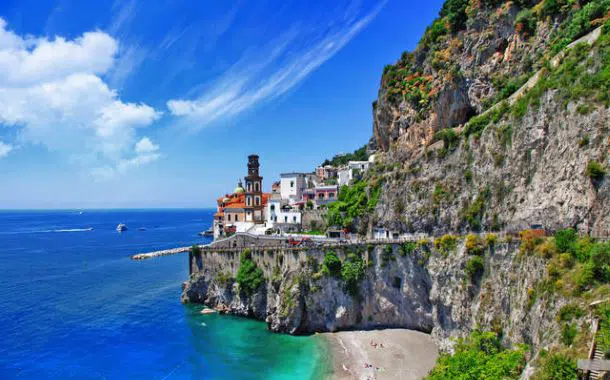
Salerno
Salerno is an Italian municipality with 133,693 inhabitants, capital of the province of the same name in Campania, the second municipality in the region by number of inhabitants and the thirtieth at national level. The city of Salerno occupies a spectacular position overlooking the Gulf, where the splendid Amalfi Coast is located, a famous tourist destination in Italian Campania. It has a rich history and a deep-rooted tradition.
During the Middle Ages the city was the capital of the homonymous Lombard principality and then of the Norman duchy of Puglia and Calabria which included a large part of the continental South and was the original nucleus of the future Kingdom of Naples and the Two Sicilies.
Salerno was home to the School of Medicine, which was the first and most important medical institution in Europe at the beginning of the Middle Ages and as such is considered by many a forerunner of modern universities. Ideal heir to the famous medical school is the University of Salerno, located since 1988, in the form of a campus, in the neighboring municipalities of Fisciano and Baronissi.
From February to August 1944 Salerno was the seat of the Italian government,[10] hosting the governments Badoglio I, Badoglio II and Bonomi II which led to the Turn of Salerno.
Starting from the second half of the nineties, the city began a series of policies aimed at improving livability, urban decor and projecting, especially as regards tourism, Salerno at national and international level. The city is therefore a candidate to become one of the poles of cruise tourism and contemporary architecture, hosting works by the greatest architects of the 21st century, such as Fuksas, Zaha Hadid, Bohigas, Chipperfield, Calatrava and Bofill.
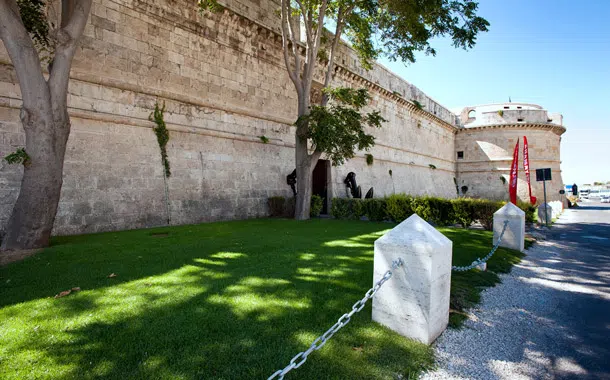
Civitavecchia
The port town of Civitavecchia is about an hour away from the Italian capital and is where ships will dock before bringing lucky holidaymakers into the city of Rome. It is an important port for cruise ships and ferries, connecting to Corsica, Sardinia and Barcelona. Civitavecchia is a town in the heart of Lazio. It is a small, sleepy town that overlooks the sea from behind the busy and chaotic commercial port.
Spreading out along the coast, the town is situated between the Mignon river to the north and the Marangone river to the south.
Civitavecchia is a port town in the heart of Italy, in the province of Rome, 80 kilometres northwest of the capital.
It is shrouded in art and history, and is rich in bays and coves with sandy and rocky beaches. Today the town is the departure point for many cruises and journeys around the Mediterranean. It is an excellent tourist destination where you can simply enjoy 'la dolce vita' or visit the amazing historical monuments. On a level with the majestic ancient capital, in terms of its monuments, gardens, villas and works of art, it also gives you easy access to the Tyrrhenian Sea, the Terme della Ficoncella, and the Etruscan ruins.
Civitavecchia will guarantee you an original and enchanting experience.
